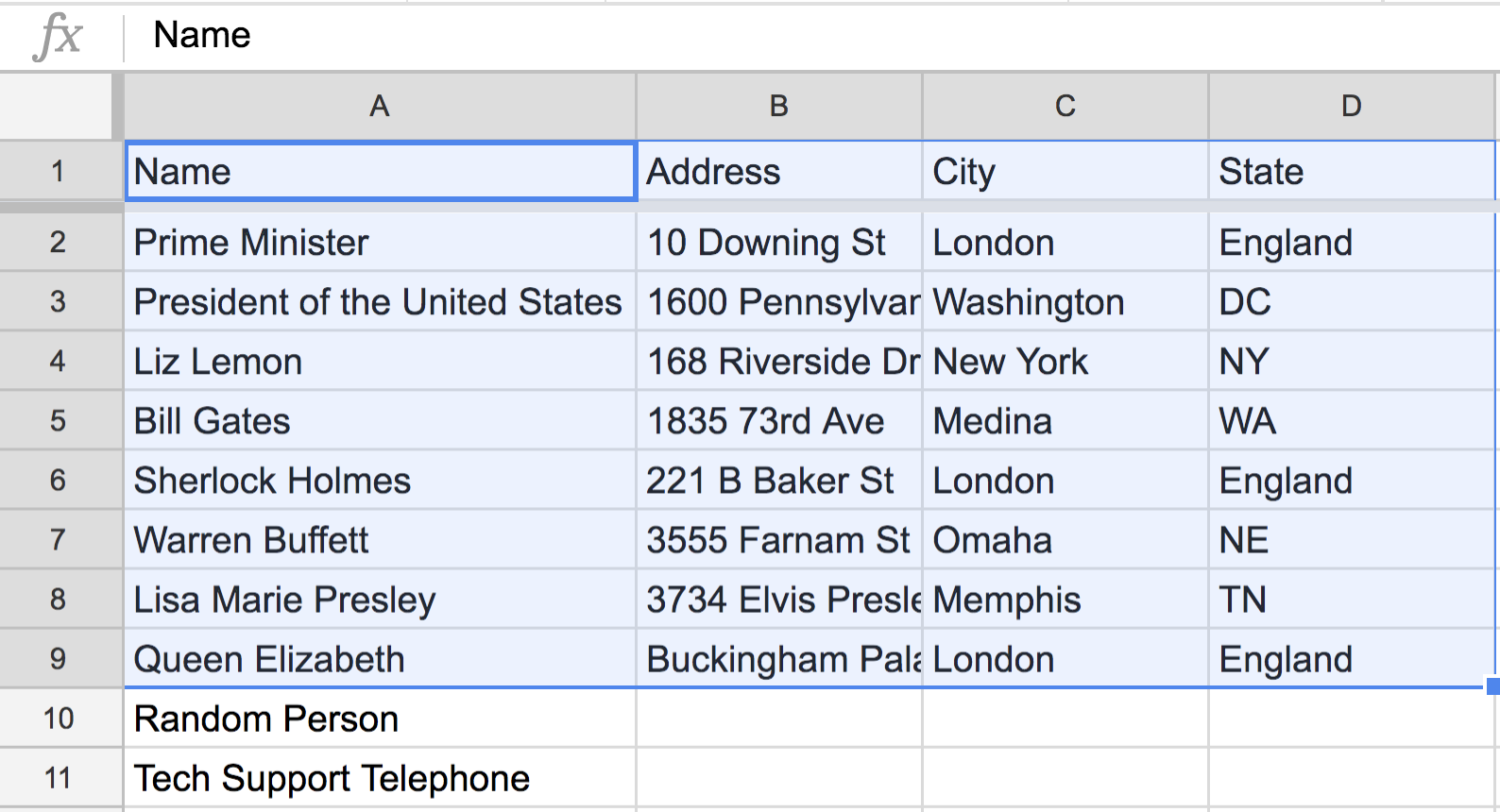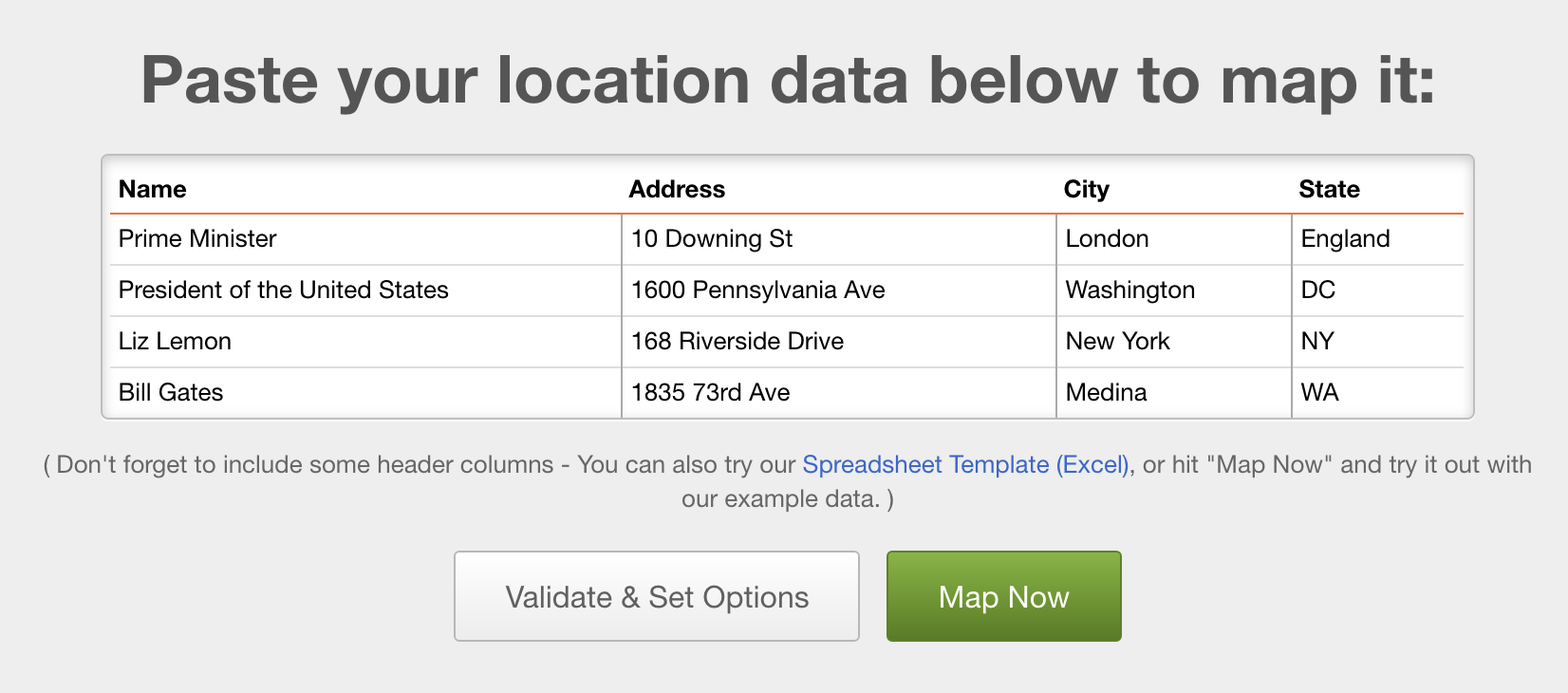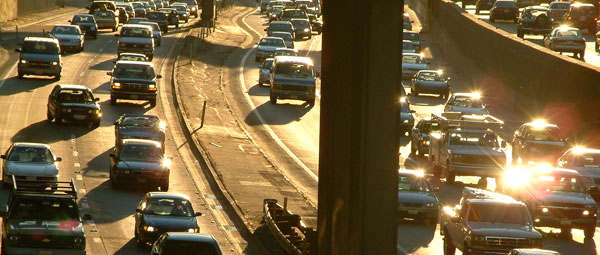There’s a good reason why most of us use smart phones to get to a new place. Unless you know a city or area really well, an address doesn’t immediately enter your mind spatially. When we can see a place—and the route to get there—on a map, it becomes clearer.
The problem grows when you have many addresses—potentially hundreds. When you want to visualize all of your holiday cards on a map or create a customer sales map you need a way to import all those addresses into Google Maps or some mapping tool.
Below you’ll find three simple steps to use when importing addresses into a map.
1. Make Sure Your Address List is in Excel or Other Spreadsheet
The spreadsheet and its similar file formats (CSV, tab-delimited, as two examples) is a universal way to move data between systems. You can share spreadsheets with almost anyone, often for free. There are also online services, like Google Sheets (part of the Google Docs Suite), that can help you quickly store and share your data.
For many people, your list of addresses may already live in Excel or another spreadsheet. That’s great! However, if you don’t yet have the data in spreadsheet form, there’s likely a way to export your contact addresses from wherever they are stored.
Export Outlook Contacts to Excel or CSV
While Outlook is best known for storing email addresses, you can also put additional contact information, such as addresses. If that’s the case, you’ll want to export them from Outlook so you can get them into a spreadsheet format.
The exact instructions will vary based on the version/edition of Outlook you own, so you’ll want to follow the Microsoft instructions. Regardless of which Outlook you have, you’ll want to look for an “Export” option in the file menu or search the program’s help option.
The best file type for your export is likely a CSV, the abbreviation of “Comma Separated Values.” This type of file is a plain text file with individual fields separated by commas. Plain text means it can be read in by any spreadsheet application, such as Excel, Numbers, or Google Sheets.
Export Apple Contacts to Excel or CSV
Apple’s application for storing addresses and other information is called Contacts. It is a Mac app that comes on your computer. If you have an iPhone, those contacts are likely synced to this application.
There is not a direct way to export from Contacts to a spreadsheet file. Instead, you need to export as Apple’s vCard format. Go to the File menu, then select Export, and then the vCard option. Once that is saved to your computer, you can use a service like this Online vCard Converter to get a CSV of your contacts.
This CSV file will include comma separated values (that’s where the acronym comes from) in a normal text file. You can then read that file with any spreadsheet application.
Export Google Contacts to Excel or CSV
Outlook and Apple Contacts are both primarily computer software, whereas Google Contacts only exists as a website. Regardless, you’ll still find an export option within the tool under the “More” menu option.
As with the others, the goal is to get a spreadsheet file. You’ll get two options for CSV, a comma separated values format that is plain text. Choose either of these and download the google.csv to your computer. You can now use that file to open your contacts in any spreadsheet application.
Export Addresses from Any Application
Your contacts may be stored in another application, such as a CRM (customer relationship management) tool, sales tracker, or similar. If you can retrieve contacts in CSV format, you’ll be set. Most of these tools support CSV (comma separated values), which is a plain text file that any spreadsheet application should be able to open.
If you aren’t sure how to export your contacts, try searching the application’s help document, search using Google, or reach out to the company’s support team.
2. Remove Contacts Without Addresses
Now that you have all your contacts in a spreadsheet format like CSV, open up the file in your spreadsheet application. If you don’t use Excel or Numbers, you can add it to Google Sheets by uploading it to Google Drive. Once uploaded, there will be an option to open in Google Sheets.
Depending where your list came from, there may be contacts without addresses. For example, you may have many records with only email address stored if you export from Outlook. Similarly, your Apple Contacts may be filled with only telephone numbers if it came from your iPhone. The key in this step is to remove contacts without street addresses, because those won’t show up on a map.
In Google Sheets, click the address column and sort it:

Then you’ll be able to see all your contacts with addresses in one place:

You can copy these to their own sheet, delete the contacts without addresses, or simply leave out the non-address contacts in the next step.
3. Copy and Paste All Contacts
Your spreadsheet is now sorted with your contact addresses grouped together. Now comes the part where we put them on a map! Using address import mapping tool it’s as easy as copy and paste:
- Select all of your contact columns from your spreadsheet, including the headers
- Copy the selection using the keyboard shortcut Ctrl+C (Command+C on Mac)
- Click into the location data box in BatchGeo and paste with Ctrl+V (Command+V on Mac).
Click the “Map Now” button and you’re done.

And in seconds, here’s the map created from my contacts:
View Import CSV Example Map in a full screen map
You’ll probably have more than just a handful, maybe even hundreds of sales leads, customers, friends, or other contacts. BatchGeo is the fastest, easiest tool to create a map from a spreadsheet of addresses. Use your own data to try it today for free!
How do I use my address map?
Once you’ve created your map, you’ll want to put it to use. Maps tell a story, and there are unlimited interpretations within them. That said, here are some things to consider for your map of contacts in your address book:
- Visualize your customers or friends: do you know what regions or neighborhoods where many of them live? Maps make these clusters stand out.
- Visit your customers or friends: search your map for nearby contacts and always be able to find those that are closest.
- Export Google Earth KML to move your geolocated contacts to other geographic systems.
These and many other possibilities are on the other side of your contact map!










